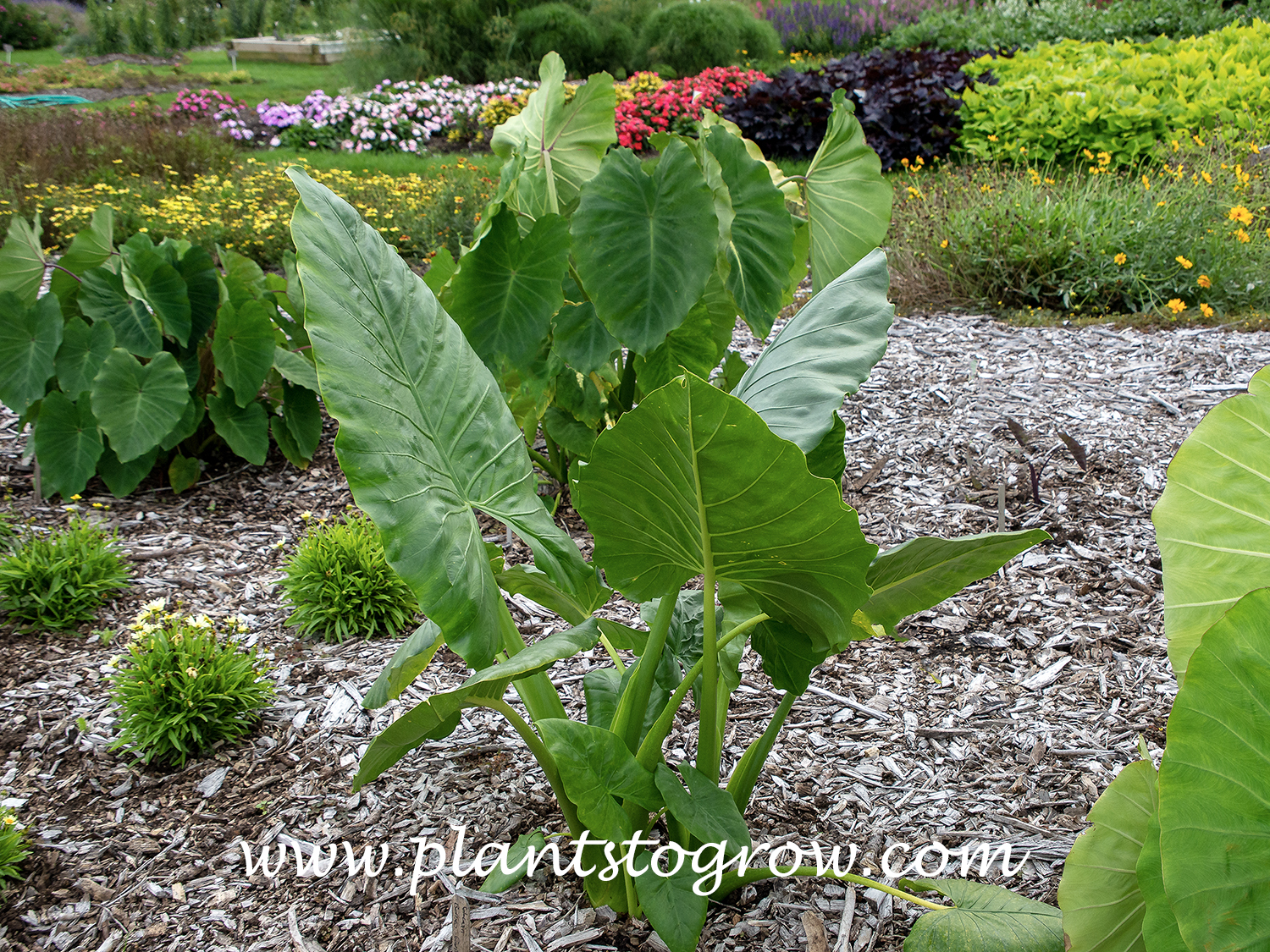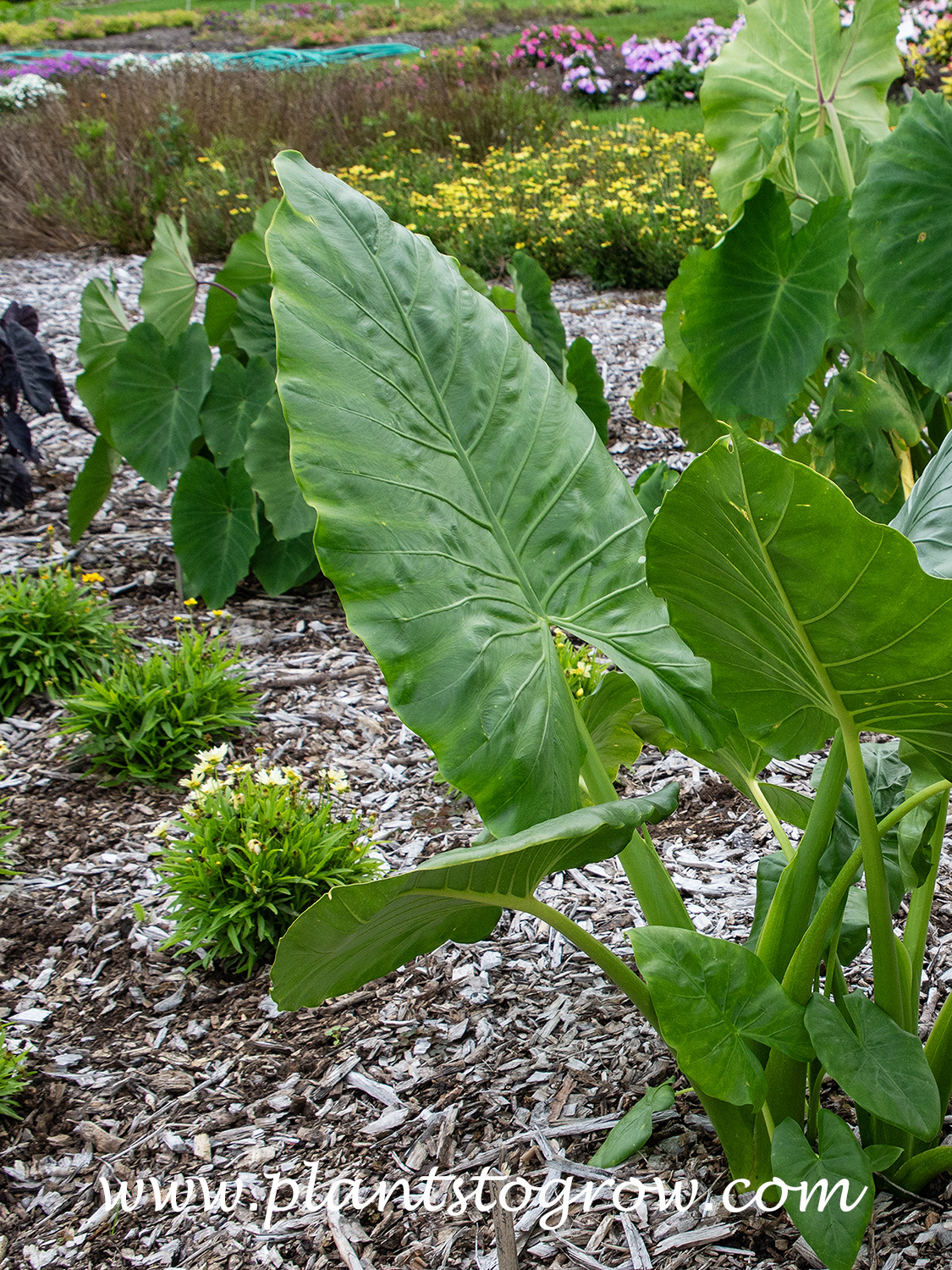| Description | Borneo Giant Elephant Ears (Alocasia macrorrhiza) is a large tropical-looking plant with upright green leaves on rigid stems. It can reach over 10 feet tall in the warmer regions of its hardiness |
|---|---|
| Pronunciation | (a-loh-KAY-see-uh) |
| Plant Type | Bulbs, corms, tubers, rhizoms, etc., Perennial Tender, Tropical herbaceous plants |
| Hardiness Zone | 9-12 |
| Sunlight | full, mostly sunny, some shade |
| Moisture | average, moist |
| Soil & Site | average, moist |
| Leaves | large green pointed arrow-shaped leaves |
| Stems | rhizomatous |
| Dimensions | can reach 7-10 feet tall with leaves reaching 5 feet, this is in warm climates |
| Propagation | division of rhizomes |
| Native Site | Asia, including but not limited to Indonesia, Malaysia, Philippines, and Australia. |
| Cultivar Origin | Alocasia Borneo Giant has been thought to be a strain or form of Macrorrhiza. |
| Misc Facts | All parts of taro can cause stomach aches if ingested without cooking and proper preparation. Contact with the sap can irritate sensitive skin AKA: Alocasia, Upright Elephant Ear, Giant Taro, Wild Taro 'Borneo Giant' |
| Notes & Reference | #51-Armitage's Manual of Annuals, Biennials, and Half-Hardy Perennials (Alan Armitage), Floridata web site) |

Cart


